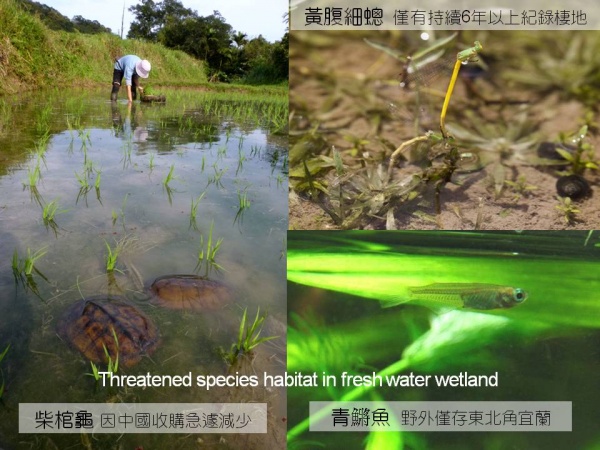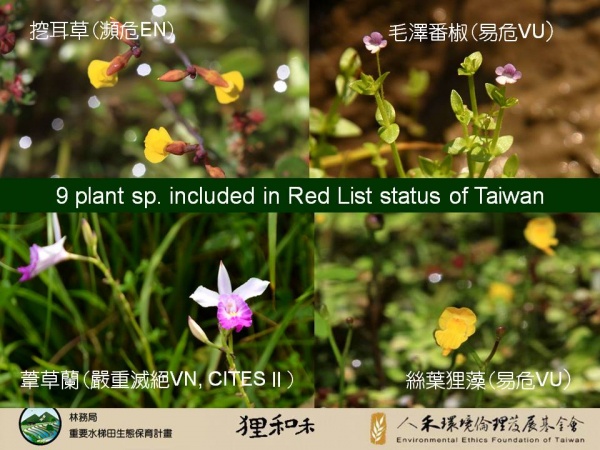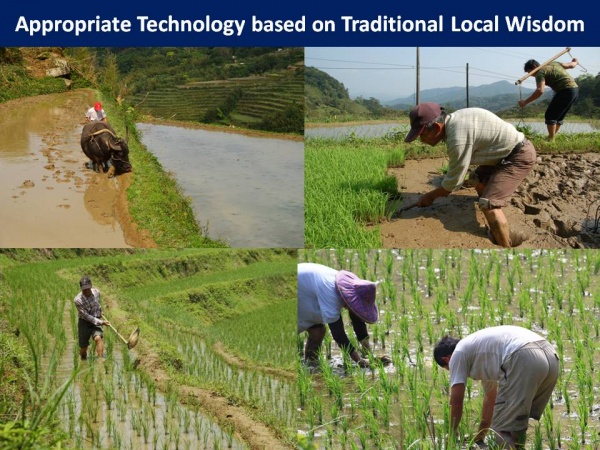Facilitating biological and freshwater resource conservation by agricultural activities at Gongliao-Hoho-Terraced-Paddy-Fields, Taiwan
16.11.2015
-
SUBMITTED ORGANISATION :
-
Environmental Ethics Foundation of Taiwan (EEFT)
-
DATE OF SUBMISSION :
-
16/11/2015
-
REGION :
-
Eastern Asia
-
COUNTRY :
-
Taiwan (Xinbei City)
-
SUMMARY :
-
Since 2011, the Forestry Bureau, COA, has been subsiding EEFT for promoting the "Gongliao-Terraced-Paddy-Field Conservation Program" in the Shungxi River Valley, which is one of the largest watershed in Northern-Eastern Taiwan. This program, which has collaborated the related stakeholders and the authorities, has been intending to protect the threatened terraced paddy fields, especially the ones cultivated in a environment-harmonic way, have great potency in connecting neighboring water corridors used by aquatic species, and maintaining regional water resources. In 2015, there is 7ha of terraced paddy fields co-managed with the local communities and authorities. The cooperated terraced paddy fields are cultivated in "Ho-ho Principles", which evolved from the traditional agricultural knowledge, and stand for a certification for the agricultural products. Besides the agricultural production, eco-tourism and environment-awareness education have extended the financial supports to the local communities, and leveled the comprehension of the public. Therefore the promoter of the conservation actions will transfer to the local communities gradually.
-
KEYWORD :
-
Gongliao-Hoho-terraced-paddy-fields, Threatened habitat and species, Aquatic ecological corridor, Freshwater recharge, Traditional agricultural technology, Ecological-stakeholder participation, Payment for ecosystem services.
-
AUTHOR:
-
1. FangYun-Ju , Environmental Ethics Foundation of Taiwan, the director of GTPF conservation program. 2. Shiue Bo-Wen, Environmental Ethics Foundation of Taiwan, the co-executioner of GTPF conservation program. 3. Hsieh Chuan-Kai, Institute of Ecology and Evolutionary Biology, National Taiwan University. 4. Lin Wen-Tsui,the founder&director of Mong-hoho Barn Company.
-
LINK:










